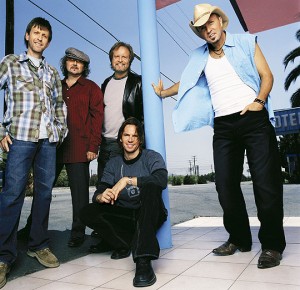
Sawyer Brown Starter Kit
 My favorite band of the early and mid-nineties was Sawyer Brown. Former Star Search winners, they had a decent run of hits in the eighties, though their early albums are legendarily awful. But they found their artistic voice when lead singer Mark Miller began writing with Mac McAnally. Many of their biggest and best hits were written by one or both of them.
My favorite band of the early and mid-nineties was Sawyer Brown. Former Star Search winners, they had a decent run of hits in the eighties, though their early albums are legendarily awful. But they found their artistic voice when lead singer Mark Miller began writing with Mac McAnally. Many of their biggest and best hits were written by one or both of them.
The end result was that Sawyer Brown became one of the only country acts that broke out in the last few years of the eighties to actually become far more commercially successful in the nineties.
Ten Essential Tracks
“The Race is On”
from the 1989 album The Boys Are Back
So much of their eighties work was disposable, but there’s a surprising charm to this revved up take on the George Jones classic. Even the Possum himself was a vocal fan of it.
